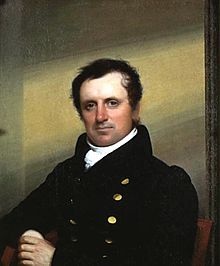
Samuel Langhorne Clemens, known by the pen name Mark Twain, was an American writer, humorist, and essayist. He was praised as the "greatest humorist the United States has produced," with William Faulkner calling him "the father of American literature." Twain's novels include The Adventures of Tom Sawyer (1876) and its sequel, Adventures of Huckleberry Finn (1884), with the latter often called the "Great American Novel." He also wrote A Connecticut Yankee in King Arthur's Court (1889) and Pudd'nhead Wilson (1894) and cowrote The Gilded Age: A Tale of Today (1873) with Charles Dudley Warner. Ernest Hemingway claimed that "All modern American literature comes from one book by Mark Twain called Huckleberry Finn."

James Fenimore Cooper was an American writer of the first half of the 19th century, whose historical romances depicting colonial and indigenous characters from the 17th to the 19th centuries brought him fame and fortune. He lived much of his boyhood and his last fifteen years in Cooperstown, New York, which was founded by his father William Cooper on property that he owned. Cooper became a member of the Episcopal Church shortly before his death and contributed generously to it. He attended Yale University for three years, where he was a member of the Linonian Society.
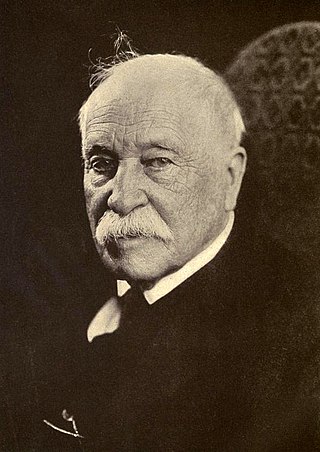
William Dean Howells was an American realist novelist, literary critic, and playwright, nicknamed "The Dean of American Letters". He was particularly known for his tenure as editor of The Atlantic Monthly, as well as for the novels The Rise of Silas Lapham and A Traveler from Altruria, and the Christmas story "Christmas Every Day," which was adapted into a 1996 film of the same name.

The Last of the Mohicans: A Narrative of 1757 is an 1826 historical romance novel by James Fenimore Cooper. It is the second book of the Leatherstocking Tales pentalogy and the best known to contemporary audiences. The Pathfinder, published 14 years later in 1840, is its sequel; its prequel, The Deerslayer, was published a year after The Pathfinder. The Last of the Mohicans is set in 1757, during the French and Indian War, when France and Great Britain battled for control of North America. During this war, both the French and the British used Native American allies, but the French were particularly dependent on Indigenous forces since they were outnumbered in the Northeast frontier areas by the British. Specifically, the events of the novel are set immediately before, during, and after the Siege of Fort William Henry.
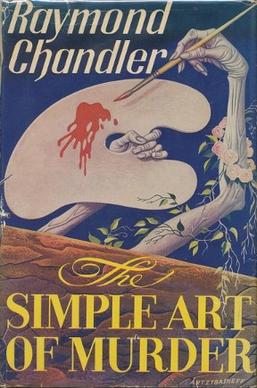
The Simple Art of Murder is the title of several quasi-connected publications by hard-boiled detective fiction author Raymond Chandler:

John Neal was an American writer, critic, editor, lecturer, and activist. Considered both eccentric and influential, he delivered speeches and published essays, novels, poems, and short stories between the 1810s and 1870s in the United States and Great Britain, championing American literary nationalism and regionalism in their earliest stages. Neal advanced the development of American art, fought for women's rights, advocated the end of slavery and racial prejudice, and helped establish the American gymnastics movement.

The Leatherstocking Tales is a series of five novels by American writer James Fenimore Cooper, set in the eighteenth-century era of development in the primarily former Iroquois areas in central New York. Each novel features Natty Bumppo, a frontiersman known to European-American settlers as "Leatherstocking", "The Pathfinder", and "the trapper". Native Americans call him "Deerslayer", "La Longue Carabine", and "Hawkeye".
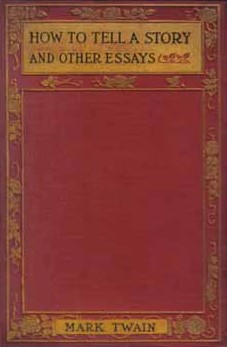
How to Tell a Story and Other Essays is a series of essays by Mark Twain. All except one of the essays were published previously in magazines. The essays included are the following:
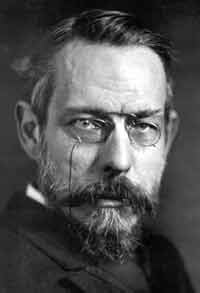
James Brander Matthews was an American academic, writer and literary critic. He was the first full-time professor of dramatic literature at Columbia University in New York and played a significant role in establishing theater as a subject worthy of formal study by academics. His interests ranged from Shakespeare, Molière, and Ibsen to French boulevard comedies, folk theater, and the new realism of his own time.

Thomas Raynesford Lounsbury was an American literary historian and critic. He was born in Ovid, New York on January 1, 1838. He graduated from Yale College in 1859 with a B.A. and received a M.A. from Yale University in 1887. He later received honorary degrees from Yale University, Harvard University, Lafayette College, Princeton University, and Aberdeen College. He enlisted in the 126th New York Volunteers in 1862 and served in the Civil War as a first lieutenant.

The Deerslayer, or The First War-Path was James Fenimore Cooper's fifth and last novel published in 1841 in his Leatherstocking Tales. Its 1740–1745 time period makes it the first installment chronologically and in the lifetime of the hero of the Leatherstocking tales, Natty Bumppo. The novel's setting on Otsego Lake in central, upstate New York, is the same as that of The Pioneers, the first of the Leatherstocking Tales to be published (1823). The Deerslayer is considered to be the prequel to the rest of the series. Fenimore Cooper begins his work by relating the astonishing advance of civilization in New York State, which is the setting of four of his five Leatherstocking Tales.
"To the Person Sitting in Darkness" is an essay by American author Mark Twain published in the North American Review in February 1901. It is a satire exposing imperialism as revealed in the Boxer Uprising and its aftermath, the Boer War, and the Philippine–American War, expressing Twain's anti-imperialist views. It makes reference to the contemporary figures Emilio Aguinaldo, William McKinley, Joseph Chamberlain, William Scott Ament and others, and fueled the Twain–Ament indemnities controversy.
American literary regionalism, often used interchangeably with the term "local color", is a style or genre of writing in the United States that gained popularity in the mid-to-late 19th century and early 20th century. In this style of writing, which includes both poetry and prose, the setting is particularly important and writers often emphasize specific features, such as dialect, customs, history and landscape, of a particular region, often one that is "rural and/or provincial". Regionalism is influenced by both 19th-century realism and Romanticism, adhering to a fidelity of description in the narrative but also infusing the tale with exotic or unfamiliar customs, objects, and people.
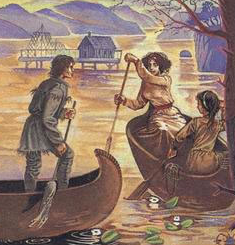
Nathaniel "Natty" Bumppo is a fictional character and the protagonist of James Fenimore Cooper's pentalogy of novels known as the Leatherstocking Tales. He appears throughout the series as an archetypal American ranger, and has been portrayed many times in a variety of media in popular culture.
The Knickerbocker Group was a somewhat indistinct group of 19th-century American writers. Its most prominent members included Washington Irving, James Fenimore Cooper and William Cullen Bryant. Each was a pioneer in general literature—novels, poetry and journalism. Humorously titled after Irving's own pen name, many others later joined the club. These include James Kirke Paulding, Fitz-Greene Halleck, Joseph Rodman Drake, Robert Charles Sands, Lydia Maria Child, Gulian Crommelin Verplanck, and Nathaniel Parker Willis, most of whom were also frequent contributors to the literary magazine The Knickerbocker.
The Californian was a San Francisco literary newspaper published weekly from May 28, 1864 until February 1, 1868.

Samuel Langhorne Clemens , well known by his pen name Mark Twain, was an American author and humorist. Twain is noted for his novels Adventures of Huckleberry Finn (1884), which has been called the "Great American Novel," and The Adventures of Tom Sawyer (1876). He also wrote poetry, short stories, essays, and non-fiction. His big break was "The Celebrated Jumping Frog of Calaveras County" (1867).
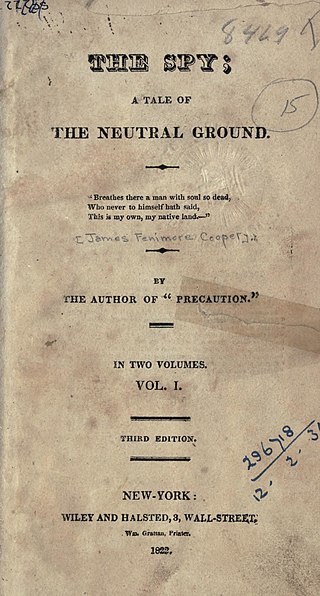
The Spy: a Tale of the Neutral Ground is a novel by American writer James Fenimore Cooper. His second novel, it was published in 1821 by Wiley & Halsted. The plot is set during the American Revolution and was inspired in part by the family friend John Jay. The Spy was successful and began Cooper's reputation as a popular and important American writer.
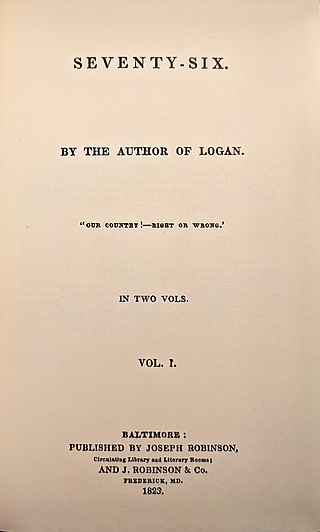
Seventy-Six is a historical fiction novel by American writer John Neal. Published in Baltimore in 1823, it is the fourth novel written about the American Revolutionary War. Historically distinguished for its pioneering use of colloquial language, Yankee dialect, battle scene realism, high characterization, stream of consciousness narrative, profanity, and depictions of sex and romance, the novel foreshadowed and influenced later American writers. The narrative prose resembles spoken American English more than any other literature of its period. It was the first work of American fiction to use the phrase son-of-a-bitch.

American Writers is a work of literary criticism by American writer and critic John Neal. Published by Blackwood's Edinburgh Magazine in five installments between September 1824 and February 1825, it is recognized by scholars as the first history of American literature and the first substantial work of criticism concerning US authors. It is Neal's longest critical work and at least 120 authors are covered, based entirely on Neal's memory. With no notes or books for reference, Neal made multiple factually inaccurate claims and provided coverage of many authors that modern scholars criticize as disproportionate to their role in American literature. Scholars nevertheless praise the staying power of Neal's opinions, many of which are reflected by other critics decades later, notably "Fenimore Cooper's Literary Offenses" by Mark Twain. Theories of poetry and prose in American Writers foreshadowed and likely influenced later works by Edgar Allan Poe and Walt Whitman. Neal argued American literature relied too much on British precedent and had failed to develop its own voice. He offered sharp criticism of many authors while simultaneously urging critics not to offer writers from the US undeserved praise, lest it stifle the development of a truly distinct American literature. Poe's later critical essays on literature reflected these strictures.

